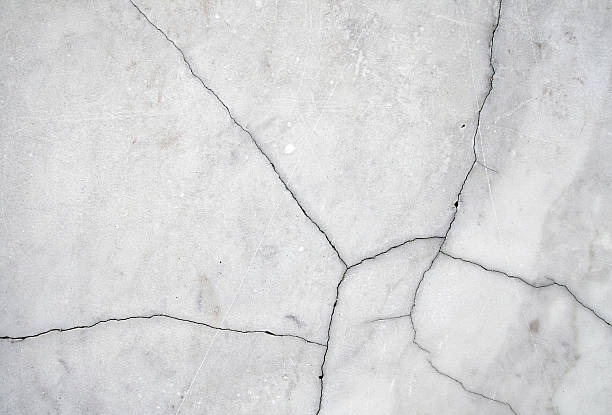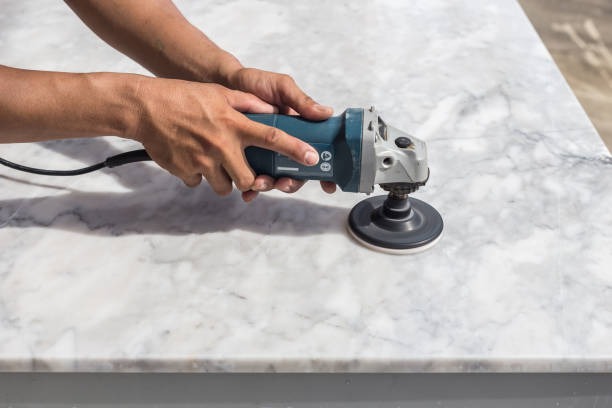Introduction
A. Overview of marble polishing
Marble polishing is a process that restores the natural shine and beauty of marble surfaces. Over time, marble can become dull, scratched, and stained, requiring proper maintenance and care.
B. Importance of marble maintenance and care
Marble is a luxurious and elegant material commonly used in countertops, floors, and decorative elements. Proper maintenance not only enhances the aesthetic appeal but also prolongs the lifespan of marble.
C. Purpose of the guide
This guide aims to provide you with a comprehensive understanding of marble polishing techniques, from basic cleaning to advanced methods, enabling you to achieve professional-level results.
II. Understanding Marble

A. Properties and characteristics of marble
Marble is a metamorphic rock composed of recrystallized carbonate minerals, typically calcite or dolomite. It possesses unique properties like durability, elegance, and a wide range of colors and patterns.
B. Common types of marble
Familiarize yourself with various marble types, such as Carrara, Calacatta, Emperador, and Statuario, as each type has distinct qualities that may influence the polishing process.
C. Factors affecting marble appearance and condition
Environmental factors, usage, cleaning products, and improper maintenance can impact the appearance and condition of marble surfaces. Understanding these factors helps in developing effective polishing techniques.
III. Preparing for Marble Polishing
A. Assessing the condition of the marble
Inspect the marble surfaces for any visible damage, stains, scratches, or etching. This evaluation will guide you in determining the necessary cleaning and polishing steps.
B. Gathering the necessary tools and materials
Prepare a list of tools and materials required for marble polishing, including cleaning solutions, polishing pads, microfiber cloths, protective gear, and a polishing machine (if applicable).
C. Ensuring a clean and safe working environment
Before starting the polishing process, clear the area of any furniture or objects that may obstruct your work. Additionally, ensure good ventilation and use appropriate safety measures like gloves and goggles.
IV. Basic Marble Cleaning Techniques
A. Removing surface dirt and debris
Begin by using a soft brush or microfiber cloth to remove loose dirt and debris from the marble surface. This step helps prevent scratches during the cleaning process.
B. Choosing the right cleaning products
Select pH-neutral or marble-specific cleaners to avoid damaging the marble. Avoid acidic or abrasive cleaners as they can etch the surface.
C. Proper cleaning methods for different marble finishes
Different marble finishes (e.g., polished, honed, brushed) require specific cleaning techniques. Follow manufacturer guidelines or consult professionals to determine the appropriate cleaning method for your marble finish.
V. Assessing and Addressing Marble Damage

A. Identifying common marble problems (e.g., stains, etching, scratches)
Learn to recognize common issues like stains from liquids or food, etching caused by acidic substances, and scratches that mar the surface. Identifying the problem correctly is crucial for effective treatment.
B. Techniques for removing stains and discoloration
Explore stain removal techniques such as poultices, hydrogen peroxide, or specialized stain removers designed for marble. Follow instructions carefully and test in inconspicuous areas.
C. Repairing minor scratches and chips
Discover techniques like sanding, buffing, or using epoxy resin to address minor scratches and chips. Professional assistance may be required for deep or extensive damage.
VI. Polishing Marble Surfaces
A. Understanding the different polishing methods (e.g., mechanical, chemical)
Mechanical polishing involves using a polishing machine and specialized pads, while chemical polishing employs polishing compounds or powders. Understand the pros and cons of each method.
B. Step-by-step guide to mechanical polishing
1. Clean the surface thoroughly and ensure it is dry.
2. Attach a polishing pad appropriate for your marble type to the machine.
3. Apply a marble polishing compound or powder onto the pad.
4. Work in small sections, moving the machine in circular motions.
5. Continue polishing until the desired shine is achieved.
C. Step-by-step guide to chemical polishing
1. Clean the marble surface and ensure it is dry.
2. Apply a small amount of the polishing compound or powder to a damp cloth.
3. Gently rub the compound onto the marble surface using circular motions.
4. Continue polishing until the desired shine is achieved.
5. Clean the surface with a damp cloth to remove any residue.
VII. Sealing and Protecting Marble
A. Importance of sealing marble surfaces
Sealing creates a protective barrier against stains and moisture, preserving the marble’s appearance and durability. It is especially crucial for high-traffic areas.
B. Choosing the right sealer for your marble
Consider factors like the type of marble, its location, and the desired level of protection when selecting a sealer. Consult professionals or refer to manufacturer recommendations.
C. Applying sealer and maintaining protection
Follow the instructions provided with the sealer carefully. Apply the sealer evenly, allow it to dry completely, and consider applying multiple coats for optimal protection. Regularly clean and reseal as needed.
VIII. Advanced Techniques and Tips
A. Dealing with deep stains and severe damage
Learn advanced techniques such as diamond honing, poultices, or professional restoration methods for addressing deep stains and severe damage. Consider seeking professional assistance for complex restoration projects.
B. Polishing large marble surfaces
Tips for polishing large areas include dividing the surface into manageable sections, working systematically, and ensuring consistent pressure and technique throughout the process.
C. Preventive maintenance for long-lasting results
Establish a regular maintenance routine that includes proper cleaning, avoiding harsh chemicals or acidic substances, using coasters and mats, and promptly addressing spills or stains.
IX. Professional Marble Polishing Services
A. When to consider hiring professionals
Recognize situations where professional marble polishing services may be necessary, such as extensive damage, specialized restoration, or lack of experience.
B. Selecting a reputable marble polishing company
Research and consider factors like reputation, experience, customer reviews, and certifications when choosing a professional service provider.
C. What to expect from professional services
Gain insights into the process, techniques, and equipment used by professionals. Understand the expected outcomes, timeline, and maintenance recommendations provided by the experts.

